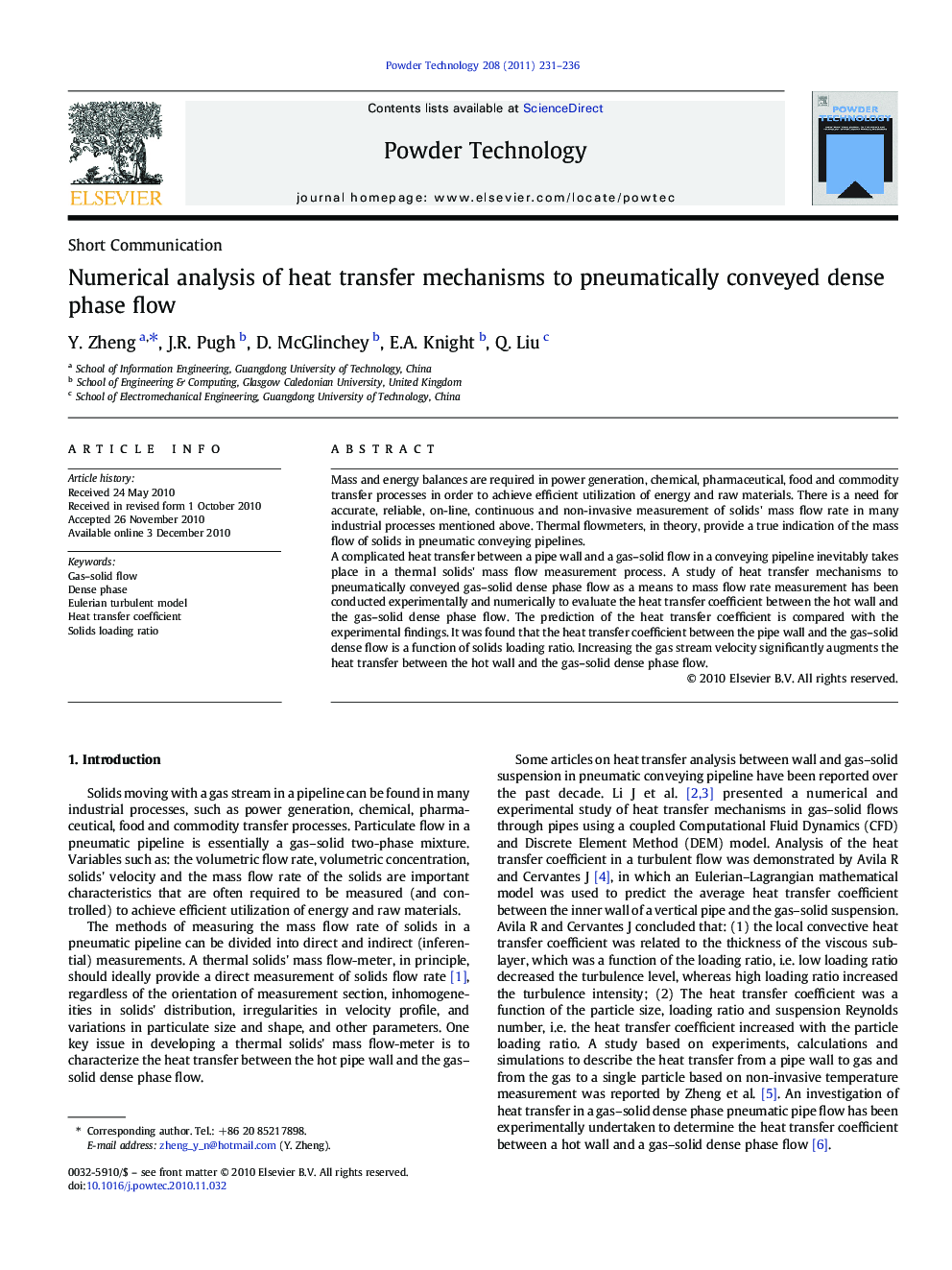| کد مقاله | کد نشریه | سال انتشار | مقاله انگلیسی | نسخه تمام متن |
|---|---|---|---|---|
| 237945 | 465732 | 2011 | 6 صفحه PDF | دانلود رایگان |

Mass and energy balances are required in power generation, chemical, pharmaceutical, food and commodity transfer processes in order to achieve efficient utilization of energy and raw materials. There is a need for accurate, reliable, on-line, continuous and non-invasive measurement of solids' mass flow rate in many industrial processes mentioned above. Thermal flowmeters, in theory, provide a true indication of the mass flow of solids in pneumatic conveying pipelines.A complicated heat transfer between a pipe wall and a gas–solid flow in a conveying pipeline inevitably takes place in a thermal solids' mass flow measurement process. A study of heat transfer mechanisms to pneumatically conveyed gas–solid dense phase flow as a means to mass flow rate measurement has been conducted experimentally and numerically to evaluate the heat transfer coefficient between the hot wall and the gas–solid dense phase flow. The prediction of the heat transfer coefficient is compared with the experimental findings. It was found that the heat transfer coefficient between the pipe wall and the gas–solid dense flow is a function of solids loading ratio. Increasing the gas stream velocity significantly augments the heat transfer between the hot wall and the gas–solid dense phase flow.
The heat transfer coefficient from the pipe wall to the gas–solid dense phase flow and the gas temperature are significant characteristics of the heat transfer process in the pneumatic conveying pipeline. These quantities are displayed in Fig. 5 as a function of flow time for a setting of: the initial gas velocity (Ug), the initial particle velocity (Up) and solids' volume fraction (VFp).Figure optionsDownload as PowerPoint slideResearch Highlights
► Eulerian к-ε simulations for a dense gas-solid flow with heat transfer are conducted.
► A larger solid volume fraction results in a higher peak of heat transfer coefficient.
► The surface heat transfer coefficient increases as the gas stream velocity increases.
► The heat transfer coefficient curves in simulations and experiments are very similar.
► Eulerian к-ε simulations are compared with the corresponding experimental results.
Journal: Powder Technology - Volume 208, Issue 1, 10 March 2011, Pages 231–236